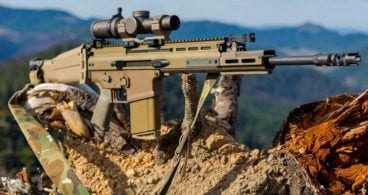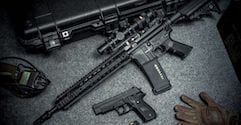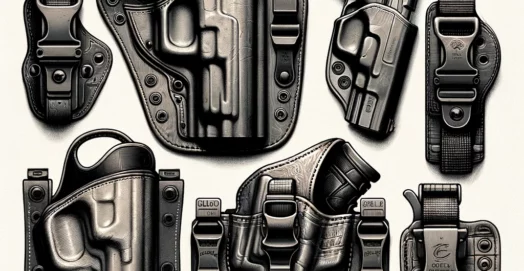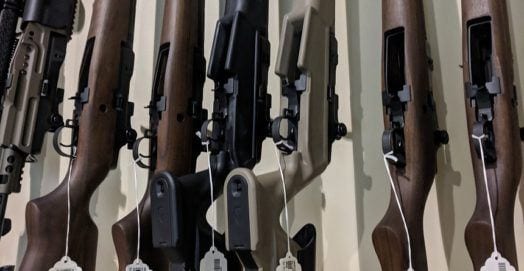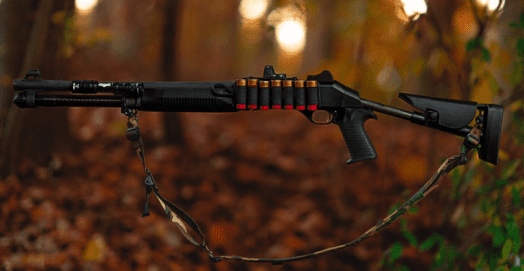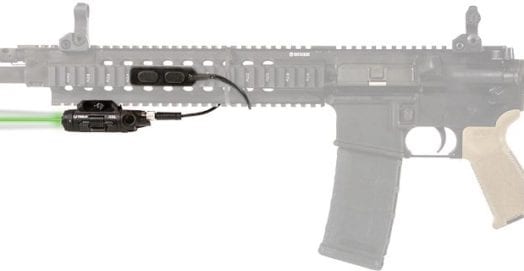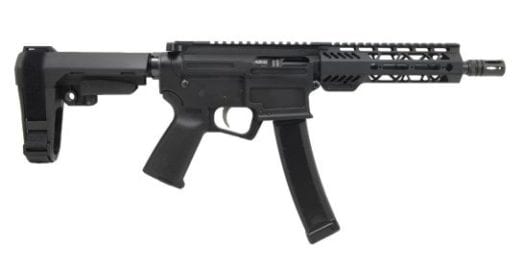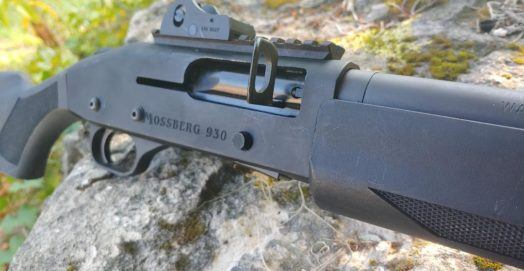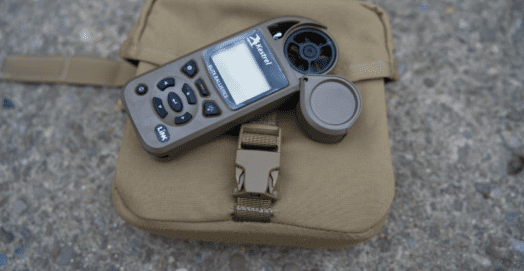Complete Guide on Best AR-15 Barrels

AR-15 Barrels
Our deep dive into the construction of the AR-15 continues. Previously, we discussed common AR-15 calibers. We took a look at lowers, and then at uppers. Today we’re getting into something far more complex: AR-15 barrels.
The upper of an AR-15 holds things together. It is a rather simple part, despite its complex role. Lowers, too, can be a bit mundane. While both are extremely important, they have little effect on the down-range performance of your rifle. That’s where the barrel comes in.
It seems obvious enough. Yet to the uninitiated, most barrels look the same. Nothing could be further from the truth.
Contents
AR-15 Barrels: Basics
To begin, let’s talk about how the barrel of an AR-15 works. When you load an AR-15, the bolt face pushes a round from the top of the magazine into the chamber. That bolt locks up behind the round. The tip of the bullet is pressed into the opening of the barrel’s breech, while the case is enclosed in the chamber. The hole through the center of the barrel is the bore.
When the pin strikes the primer, the powder ignites. The shell expands to fill any leftover space inside the chamber. The burning powder creates gasses that expand and seek the path of least resistance. This is what pushes the bullet down the barrel.
The gasses continue to expand, pushing the bullet ahead of them. When the bullet passes the gas vent, some of the gasses are directed back into the upper, where they push against the bolt carrier group, sending it backward.
As the bullet exits the barrel at the muzzle, the bolt carrier group is engaging the buffer spring. That spring pushes the bolt carrier group forward again. As it travels forward, it picks up another round and slams it into the breech where the whole process is reset and ready to go again.
Material Construction
AR-15 Barrels, almost all of them, are made of steel. There are a few odd hybrid designs on the market now (like these carbon fiber combos), but each really deserves its own article. For now, since more than 99% of gun barrels are steel, that’s where we’ll start.
There are two common alloy groups, each with innumerable permutations and confusing proprietary trade names. For simplicity sake, I’m breaking them into these two groups: stainless steel and carbon steel.
Carbon steel is the standard. Carbon is added to iron to reduce its brittle nature. Other metals are added, too, to increase hardness, machinability, plasticity, elasticity, etc. You’ll often see mixtures of chromium, nickel, and molybdenum. Many manufacturers call their barrel steel Chromoly steel. Chromoly is resistant to rust, but not nearly as resistant as the other main option: stainless.
Stainless steel has increased rust resistance, thanks to the addition of other elements, like manganese and silicon, but also has even more molybdenum and chromium. While stainless is not rustproof, it is far more rust resistant than traditional carbon steels. It also isn’t as hard. Traditionally, stainless barrels have been used for bull barrel profiles (more on that below), but now you can get almost any profile in stainless, like this 16.1” from Odin Works.
Here’s the rub. There are numerous carbon steels that have been engineered for greater rust resistance. These steels are strong, hard, and corrosion-resistant. The same can be said for stainless steels. Many knifemakers are using stainless steels for blades where a hard, strong, and corrosion-resistant edge is a must.
In short, what used to be a simple X/Y binary choice has now become a longer spectrum of options for barrel makers and shooters. Stainless AR-15 barrels are still considered to have a shorter lifespan. More on that below.
Consistency
You get what you pay for. When we say that the parts of an AR-15 are modular, we all know that some manufacturers run with loose tolerances. There are acceptable margins of error, but still….
The bore of some barrels may measure anywhere from .22392” to .22415” down the length of the bore. While .00023 of an inch is not enough of a difference to spot with the naked eye, but it is enough to jack up your accuracy at long ranges. The bullets, traveling through the length of the bore, hit loose spots or tight spots, and that may be good-enough-for-government-work, but not for a shooting competition.
AR-15 Barrels that are labeled “match” are usually cut to tighter tolerances. There may only be .00004 inches of deviation down the length of a bore. This should equate to more consistent shot placement.
Match barrels are more expensive, though, so be prepared.
The Outside of AR-15 Barrels
Stainless AR-15 barrels may be coated, but doing so is more for cosmetic purposes. Carbon steel barrels need a coating to protect them.
Some barrels are anodized. Stainless barrels are typically uncoated, though they may be bead blasted to cut down on glare. If you want a seriously well-protected barrel, check out what WMD does with nickel boron.
AR-15 Barrel Profiles
Everyone’s familiar with what the barrel on the typical bolt-action rifle looks like. AR-15 barrels, though, often have cuts and holes that appear odd when they’re not covered by handguards and gas blocks.
We’ll start heavy and work down. Bull barrels are like fat tubes of steel (usually stainless) that are known for their accuracy. Some are not meant to be carried but work well from the bench.
https://www.cbcindustries.com/products/ar15-upper-assembly-20-inches-bull-barrel-223-wylde-160006/
Other companies make bull barrels that are meant for hunting, like this Rock River. They don’t have the same diameter as the fat boys, but they’re very good for varmint hunting. To cut out some of that weight, companies flute or dimple barrels.
The standard military parameters have varied over the years. The A1 profile AR-15 barrels were long and thin. Rumor has it they bent if the barrel was used as a pry bar. So the A2 profile added a bit of mass to the front end for stability.
The M4 profile and the M4A1 both are shorter, 14.5”. They have slightly wider profiles but aren’t as heavy as the rifle barrels—because they’re shorter.
The other profile you might see is a “pencil” barrel.
The pencil profile is apt. These are skinnier than either of the M4 profiles. This makes a lighter gun, but isn’t quite as durable.
Which one is right for you? Again, what’s the gun’s intended purpose? For an all-around, do-everything AR, I’d stick with an M4 profile.
Stag is a good place to start for an all-purpose configuration.
AR-15 Barrels: Length
I mentioned gas expansion above. As the powder burns, the bullet travels. In a perfect world, the last of the powder will burn up as that bullet nears the end of the barrel. This would keep down muzzle flash, allow the bullet to reach the highest speed possible, and (as a result) allow for the maximum terminal ballistic effect.
Because cartridge specifications differ, though, it is hard to get that balance perfect.
Shorter AR-15 barrels are incredibly easy to maneuver and lighter. They often create spectacular fireballs, especially in low light situations. As there is less rifling, the bullet may not stabilize as well as it could from a longer barrel, so the effective range of shorter barrels is typically less than that of a longer barrel.
If you want a super short 7.62s39, you could try this PSA.
Most gun-store M4 pattern barrels come in at 16.5 inches. This is a nice compromise. A longer barrel means greater velocity and (should mean) increased accuracy.
AR-15 barrels made for long-range hunting often extend out to 24 inches. While accuracy from these barrels can extend the available range of an AR, the terminal performance of the 5.56 round begins to drop off as it loses speed, so most of these long guns are meant for varmint hunting, and not precision tactical applications.
AR-15 Barrels: How long is too long?
How short is too short? Remember that short barrels sacrifice velocity. All of that flame shooting from the barrel—something Hollywood equates with stopping power—is actually just wasted energy.
Maxim Defense makes a 5.5-inch barrel for their PDW. That’s short. In my opinion, the ideal short-barreled AR-15 has a barrel that’s 10.5 inches long. The actual M4 has a 14.5 barrel. Maxim Defense makes a 5.5-inch barrel for their PDW. That’s short. A 5.5 inch AR may seem crazy small, but it opens up new opportunities for concealment that aren’t possible with even a traditional SBR length.
Check out Rainier Arms. Their catalog of barrels shows the range of possibilities.
For most of us, though, the AR-15 represents the middle ground. I train at close distances, but do most of my shooting at distances between 50 and 300 yards. If I want to shoot longer distances, I’m likely to move to a bolt action .308. If I’m going for capacity and conceal-ability, I look to a pistol caliber carbine. But the AR can do all of it.
Connections
The barrel extension fits in the upper. A barrel nut holds the two together.
On the typical M4 pattern AR, the handguard connects to the barrel. The front sight may be built onto the gas block, connecting at two places. The barrel may even have holes drilled into the profile to pin on a gas block.
The type of gun really determines how much work you will expect the barrel to do. If you are looking for long-range precision, avoid hanging too much off the barrel. Mid-range guns can support handguards, lights, muzzle devices, gas blocks, lasers….
Thread Patterns
At the muzzle end, most AR-15s have an attachment of some sort. These vary from simple birdcage muzzle brakes to suppressors, to elaborate compensators.
Beneath them, the end of the barrel will be threaded.
The most common pattern for the AR is a 1/2-28-thread count. This means that half-an-inch of threaded barrel will have 28 threads if counted from top to bottom. This standardization allows for you to find off-the-shelf attachments that are virtually guaranteed to fit.
As you increase in size (or decrease) these common modularities will change. This is another place where companies will work in proprietary changes that prevent you from using a wide variety of aftermarket parts. Companies like FN, Ruger, Steyr, and HK often use other thread pitches for their parts on their 5.56 rifles (many of which don’t even remotely fit into the AR category).
Inside AR-15 Barrels
The bore of a rifle barrel is easy enough to wrap your mind around. There are lands and grooves. The lands are the raised portions. The bullet typically forms to fit the lands and grooves, which twist on their way down the barrel, adding the spiral pattern of flight that stabilizes the projectile.
Cutting these lands and grooves, though, requires a bit of metallurgy combined with manufacturing wizardry, capped off with a bit of engineering ingenuity. Here are five popular methods.
Cut rifling is exactly what it sounds like. A hardened blade is pulled through a hole, over and over, until all of the groves are cut.
Button rifling is similar, but can be done in fewer passes, and—sometimes—just one, as the cutter head cuts all of the grooves at once.
Broached barrels have a cutter that is staggered in depth. The bore is cut to size and rifled in one pass, typically.
Hammer forged barrels are harder to imagine. A fat bar is placed on a mandrill and hammered, from the outside. This lengthens the barrel, forms it to shape, while the mandrill forms the inside of the bore.
Cation rifling is one of the newest methods, and it uses acids to shape the inside of the barrel. Once the bore is cut, acid wipes are pulled through, and when the exact depth needed is reached, the solution is neutralized.
Some of these methods are time-consuming but produce incredibly consistent results. Others are ideal for mass-producing barrels and are good enough for use on most carbines. What matters most here isn’t the method, in my opinion, but the quality control and capabilities of the manufacturers.
Twist Rate
The typical AR-15 twist rate is 1/7. That means it takes 7 inches of barrel to spin the bullet 360 degrees.
The standard rule of thumb dictates that the heavier the bullet, the slower the twist rate. This isn’t 100% accurate. It has to do with the length of the projectile, too.
With most 5.56 bullets, more length means more weight. That’s not the case with .223 rounds made of copper or other alloys. These may be lighter, but still longer, than their lead counterparts.
Twist rates with smaller numbers (1/7, or 1/8) spin projectiles faster than slower rates (like 1/12, or 1/14).
Here again, we return to purpose. If you are building a knockabout carbine that you want to do multiple tasks, I’d stay in the 1/7 or 1/8 range.
For long-range hunting, where tiny bullets are not uncommon, go slower. Know the distances you might want to shoot, and the grain weight of the ammo you intend to pair with the barrel.
This is one of the areas where more reading should be mandatory. What I’m addressing here is really just the typical 5.56 or .223 type AR-15. AR-15 barrel length plays a huge part in how some projectiles are stabilized (with longer barrels offering more stability). But other calibers have their own peculiarities that have to be considered.
If you don’t find the material you need on the internet, and you might not, call the company. If you are spending money on a high-end barrel, you should be able to talk to an expert about what you want and need to get the job done.
Linings
When we were discussing the material composition of the barrels, I mentioned the corrosion resistance inherent in steel. Nothing is perfect. All steels will, sooner or later, rust.
Even the beloved Chromoly will rust, and much sooner than you’d expect. That’s why so many are lined with more chromium. Chromium offers excellent protection but adds a slight layer of material inside the barrel. While it has to be measured microscopically, many feel like a chrome-lined barrel isn’t as accurate as an unlined barrel.
That where stainless comes in. A stainless barrel isn’t as easy to clean, and it will still rust, but it can be made at much tighter tolerances.
A stainless AR-15 barrel will wear out faster, though, so keep that in mind. This is hardly a consideration for most shooters. Long-range hunters, one of the main groups using stainless barrels, spend lots of money on boutique ammunition. The sport itself is slow and precise. Round counts are low. If you like mag-dumps with surplus ammo, a chrome-lined barrel will last longer.
The Crown
While we’re talking about long-range shooting, we can talk about the crown. Look closely at the muzzle end of the barrel (but only after confirming the gun is empty and safe, etc.).
What you want to see is consistency. The ends of the lands and grooves, where the bullet leaves the barrel, should all have well-dressed edges. There shouldn’t be even a hint of a burr. Look for the steel at the bore to be chambered.
Some barrels are rounded over–some are flat. Some are cut to 11 degrees. I’m less concerned with how they’re cut, but very demanding about how they’re finished. This step in the process really deserves some hands-on attention to detail.
Head Space
Once you know what your caliber’s going to be, and you decide on your barrel, you will need to check the headspace. This is a set distance between the bolt face and a given point on a cartridge (which varies depending on the type of cartridge being used).
Proper headspace ensures that the gun will go into battery and that the round will fit securely in the chamber. Too much space is bad, as cases will stretch. Too little headspace is even worse, as the gun may not go completely into battery.
If you are building an AR yourself, you have to check this detail. Begin thinking about it now. Investing in go/no-go gauges is worthwhile, and a one-time expense (unless you bugger them up).
Feed Ramps
We talked a bit about feed ramps in the article on uppers. As rounds leave the magazine, the nose of the bullets has to find their way into the chamber. A good ramp will help with the process.
Make sure that the ramp matches your uppers ramp (or lack there-of). Most M4 style uppers will have two grooves cut into the aluminum of the upper that meet up with the two (deep) grooves that are cut into the barrel.
Some government pattern rifles have shallow grooves cut in the steel and don’t need ramps cut into the upper.
If you put a shallow ramped barrel on the M4 style upper, the steel will form a sharp rim above the upper’s ramps that will bite into the tip of bullets. When this happens, the gun comes to a halt.
Free Float
It is almost impossible to truly free-float an AR barrel. If the gun runs on gas, you will need a gas block somewhere on the barrel.
But barrels move during live-fire. If you haven’t seen this in action, Google barrel-whip. Slow-motion video has captured the concept exceptionally well. The process, though, is simple. As the pressure increases behind the bullet, the barrel moves in a wavelike pattern.
This is why free-floated barrels are important. If there is nothing hanging off the barrel, nothing interrupts the barrel’s movement.
For AR-15 fans, there are options that come close to being free-floated. Handguards can be attached to the upper itself, or to special barrel nuts. Gas blocks can be greatly reduced in size, and hidden under long forends. Even muzzle devices can be minimized or left off.
If you want a carbine style AR, it doesn’t really matter much. If you are looking for something that can reach out, then plan ahead.
Flutes
As we get down to the end, there are extra options that could be added. Flutes are one of the more functional and decorative components.
Flutes reduce weight. The ridges they create, some argue, add rigidity. They look pretty, too. They also reduce weight. I’ve owned a couple of ARs with fluted barrels, and I’ve never noticed an increase in accuracy, but the weight reduction is real, and the spirals look sharp as they emerge from the end of a forend.
These show the patterns on three from X-Caliber.
For most of us, a barrel is a barrel. I actually own several AR-15 barrels that I can’t identify. They came off project guns and acquisitions over the years, and have spent time on shelves and on random ARs. They shoot fine.
So many companies are making barrels now that is can be hard to keep track. Some major retailers, those we don’t typically associate with the production of parts, have barrels made for their house brands. These big contract buys help keep costs down.
If you are looking for a deal for a budget build, I’d suggest starting at the Sportsman’s Guide. Cabela’s is a good option, too, for a broad selection of name brand barrels. Rainier Arms has their own line, and even do some intricate coatings of barrel extensions that help keep things clean.
And again, to close, I’d say keep your eyes peeled. No reason why you shouldn’t have a 24” upper and a 16” and maybe a 10.5”, too, with a stamp.
Rainier Arms
Check out these AR-15 barrels from Rainier Arms, they have a great selection for your next build.




